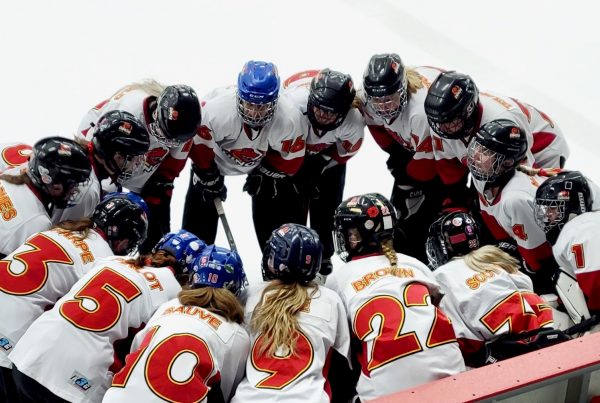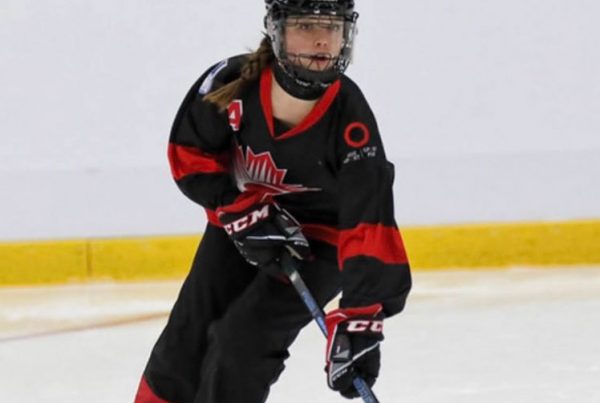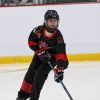
Skates:
Properly fitted skates really improve learning as well as enjoyment of the game.
- When choosing a skate it is best to choose a good quality skate that fits really well and is comfortable. Make sure to try on different brands as each brand fits each individual differently. I prefer a lighter, softer, less stiff boot.
- Skates should not be too big – one size growth allowance maximum! My preference is that the skates fit snug at the heel and with the toes just “feathering” the end of the boot.
- Proper width is very important – look for a wide lacing pattern (about 2-2 ½” across between the eyelets).
- A thin sock is preferable in the boot, no thick socks.
- Good quality skates with proper ankle support are very important in learning correct skating technique. When standing in your skates the ankles should be straight up and down – not pronating/caving in and not supinating/caving out. With proper ankle support correct skating technique is much easier and much less painful!
- Good quality skates (not too stiff) are a good investment as they will last and can be passed down to siblings or sold at the end of the season.
- Good quality used skates can be a great option because they are already broken in for you and also less expensive.
- The skates should be super comfortable – there should not be any blisters.
- Most skates can be stretched close to a half size bigger if needed to get a skater through the season.
- Ankle bone areas of the boot can be punched out to provide some relief for boney feet.
- I have found the Gel Shin Guards very helpful in providing some cushioning and protection inside the top of the skates when breaking in skates. They also help to eliminate painful chafing and rubbing if you are wearing your skates for extended periods.
- Do not walk on any surface with your skates unless it is rubber matting or unless you are wearing skate guards.
- Make sure to wipe skates and blades dry after each practice. Stainless steel blades are not likely to rust, but the rivets may rust, and it is best to get in the habit of taking good care of your skates and blades by giving them a good wipe dry. Also, when storing your skates make sure to pull the tongues forward and let the inside of the skates dry out.
- Do not store skate blades with plastic guards on because the guards tend to be wet inside and can cause blade rust. Terry cloth blade covers work well to protect your blades in your bag and the terry cloth can soak up some of the blade moisture.
Skate Lacing:
- Proper lacing allows knee and ankle bend, and the ability to roll ankles inward and outward.
- The area of tightest lacing is the ankle area (just above the ball of the foot to just above the ankle).
- The toe area and above the ankle should be only snug. Do not lace these areas too tight because it may cut off circulation. If a skater is complaining that their feet hurt, are numb, or are tingling this “ball of the foot” or toe area of the skate may be too tight.
- Waxed laces work great in tightening and maintaining tightness. They work especially well for younger players when they start to tie their own skates.
- When taking skates off make sure to loosen the skate – take the laces out of the first 1-2 eyelets if needed so that the skate is easy to slip into and ready for the next practice.
Updated April, 2020






